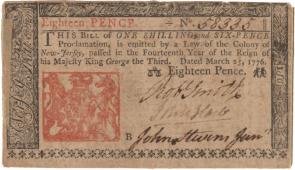
PREV ARTICLE
FULL ISSUE
PREV FULL ISSUE
FEATURED WEB PAGE: THE US BANKING SYSTEMThis week's Featured Web Page is an article on the history of the U.S. banking system by Richard Sylla, Chairman of the Board of the Museum of American Finance.Banks are among the oldest businesses in American history—the Bank of New York, for example, was founded in 1784, and as the recently renamed Bank of New York Mellon it had its 225th anniversary in 2009. The banking system is one of the oldest, largest, and most important of our industries. Most adult Americans deal with banks, often on a fairly regular basis. Nonetheless, banks and banking seem rather mysterious. What do banks do? Why have they for so long been an integral part of our economy? Banks have two important economic functions. First, they operate a payments system, and a modern economy cannot function well without an efficient payments system. We make most of our payments by writing checks, swiping credit cards issued by banks or tied to them, and by paying bills via online banking. Most of the money stock of the country is in fact bank money; the rest of the currency is “legal tender” issued by the government, namely Federal Reserve Notes and coins. We have confidence in bank money because we can exchange it at the bank or an ATM for legal tender. Banks are obligated to hold reserves of legal tender to make these exchanges when we request them.  /www.gilderlehrman.org/history-by-era/hamiltoneconomics/essays/
|

